 W
WReligious cosmology is an explanation of the origin, evolution, and eventual fate of the universe, from a religious perspective. This may include beliefs on origin in the form of a creation myth, subsequent evolution, current organizational form and nature, and eventual fate or destiny. There are various traditions in religion or religious mythology asserting how and why everything is the way it is and the significance of it all. Religious cosmologies describe the spatial lay-out of the universe in terms of the world in which people typically dwell as well as other dimensions, such as the seven dimensions of religion; these are ritual, experiential and emotional, narrative and mythical, doctrinal, ethical, social, and material.
 W
WThe ancient Mesopotamian underworld, most often known in Sumerian as Kur, Irkalla, Kukku, Arali, or Kigal and in Akkadian as Erṣetu, although it had many names in both languages, was a dark, dreary cavern located deep below the ground, where inhabitants were believed to continue "a shadowy version of life on earth". The only food or drink was dry dust, but family members of the deceased would pour libations for them to drink. Unlike many other afterlives of the ancient world, in the Sumerian underworld, there was no final judgement of the deceased and the dead were neither punished nor rewarded for their deeds in life. A person's quality of existence in the underworld was determined by his or her conditions of burial.
 W
WIn astronomy, axis mundi is the Latin term for the axis of Earth between the celestial poles.
 W
WIn Baháʼí cosmology reality is divided into three divisions. The first division is God, who is preexistent and on whom the rest of creation is contingent. The second division is God's Logos, the Primal Will, which is the realm of God's commands and grace. This realm pervades all created things. The Manifestations of God, Messengers from God, are appearances of the Logos in the physical world. The third division is Creation, which includes the physical world. Creation is not seen as confined to the material universe, and individual material objects, such as the Earth, are seen to come into being at particular moment and then subsequently break down into their constituent parts. Thus, the current universe is seen as a result of a long-lasting process, evolving to its current state. In the Baháʼí Faith, the whole universe is a sign of God and is dependent on him and humanity was created to know God and to serve his purpose.
 W
WThe Barton Cylinder is a Sumerian creation myth, written on a clay cylinder in the mid to late 3rd millennium BCE, which is now in the University of Pennsylvania Museum of Archaeology and Anthropology. Joan Goodnick Westenholz suggests it dates to around 2400 BC.
 W
WBiblical cosmology is the biblical writers' conception of the cosmos as an organised, structured entity, including its origin, order, meaning and destiny. The Bible was formed over many centuries, involving many authors, and reflects shifting patterns of religious belief; consequently, its cosmology is not always consistent. Nor do the biblical texts necessarily represent the beliefs of all Jews or Christians at the time they were put into writing: the majority of those making up Hebrew Bible or Old Testament in particular represent the beliefs of only a small segment of the ancient Israelite community, the members of a late Judean religious tradition centered in Jerusalem and devoted to the exclusive worship of Yahweh.
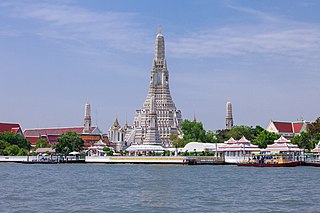 W
WBuddhist cosmology is the description of the shape and evolution of the Universe according to the Buddhist scriptures and commentaries.
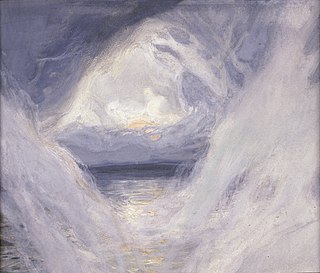 W
WA creation myth is a symbolic narrative of how the world began and how people first came to inhabit it. While in popular usage the term myth often refers to false or fanciful stories, members of cultures often ascribe varying degrees of truth to their creation myths. In the society in which it is told, a creation myth is usually regarded as conveying profound truths – metaphorically, symbolically, historically, or literally. They are commonly, although not always, considered cosmogonical myths – that is, they describe the ordering of the cosmos from a state of chaos or amorphousness.
 W
WCreationism is the religious belief that nature, and aspects such as the universe, Earth, life, and humans, originated with supernatural acts of divine creation. In its broadest sense, creationism includes a continuum of religious views, which vary in their acceptance or rejection of scientific explanations such as evolution that describe the origin and development of natural phenomena.
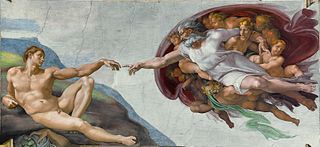 W
WCreationist cosmologies are explanations of the origins and form of the universe in terms of the Genesis creation narrative, according to which God created the cosmos in eight creative acts over the Hexameron, six days of the "creation week":Day 1: Creation of light, separation of light from darkness; Day 2: Creation of the firmament, separation of waters above the Earth from waters below; Day 3: Separation of waters below the firmament from the dry land; the Earth is commanded to produce vegetation; Day 4: Creation of "lights" in the firmament; Day 5: Creation of fish and birds to populate the sea and sky; Day 6: Creation of animals creation of mankind.
 W
WDating creation is the attempt to provide an estimate of the age of Earth or the age of the universe as understood through the origin myths of various religious traditions. Various traditional beliefs held that Planet Earth, or the entire Universe, was brought into being in a grand creation event by one or more gods. Once these cultures developed calendars, many began to ponder the question of precisely how long ago this event happened.
 W
WThe "Debate between sheep and grain" or "Myth of cattle and grain" is a Sumerian creation myth, written on clay tablets in the mid to late 3rd millennium BC.
 W
WThe Debate between Winter and Summer or Myth of Emesh and Enten is a Sumerian creation myth, written on clay tablets in the mid to late 3rd millennium BC.
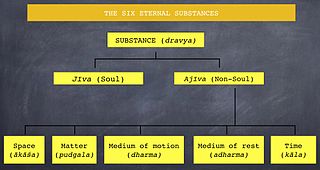 W
WDravya means substance or entity. According to the Jain philosophy, the universe is made up of six eternal substances: sentient beings or souls (jīva), non-sentient substance or matter (pudgala), principle of motion (dharma), the principle of rest (adharma), space (ākāśa) and time (kāla). The latter five are united as the ajiva. As per the Sanskrit etymology, dravya means substances or entity, but it may also mean real or fundamental categories.
 W
WIn ancient cosmologies, the Empyrean Heaven, or simply the Empyrean, was the place in the highest heaven, which was supposed to be occupied by the element of fire. The word derives from the Medieval Latin empyreus, an adaptation of the Ancient Greek empyros (ἔμπυρος), meaning "in or on the fire (pyr)".
 W
WEnlil and Ninlil or the Myth of Enlil and Ninlil or Enlil and Ninlil: The begetting of Nanna is a Sumerian creation myth, written on clay tablets in the mid to late 3rd millennium BC.
 W
WEternal return is a concept that the universe and all existence and energy has been recurring, and will continue to recur, in a self-similar form an infinite number of times across infinite time or space.
 W
WIn biblical cosmology, the firmament is the vast solid dome created by God on the second day to divide the primal sea into upper and lower portions so that the dry land could appear.
 W
WSeveral cosmological and mythological systems portray four corners of the world or four quarters of the world corresponding approximately to the four points of the compass. At the center may lie a sacred mountain, garden, world tree, or other beginning-point of creation. Often four rivers run to the four corners of the world, and water or irrigate the four quadrants of Earth.
Gavaevodata is the Avestan language name of the primordial bovine of Zoroastrian cosmogony and cosmology, one of Ahura Mazda's six primordial material creations and the mythological progenitor of all beneficent animal life.
 W
WThe Genesis creation narrative is the creation myth of both Judaism and Christianity. The narrative is made up of two stories, roughly equivalent to the first two chapters of the Book of Genesis. In the first, Elohim creates the heavens and the Earth in six days, then rests on, blesses and sanctifies the seventh. In the second story, God, now referred to by the personal name Yahweh, creates Adam, the first man, from dust and places him in the Garden of Eden, where he is given dominion over the animals. Eve, the first woman, is created from Adam and as his companion.
 W
WThe Gudea cylinders are a pair of terracotta cylinders dating to circa 2125 BC, on which is written in cuneiform a Sumerian myth called the Building of Ningirsu's temple. The cylinders were made by Gudea, the ruler of Lagash, and were found in 1877 during excavations at Telloh, Iraq and are now displayed in the Louvre in Paris, France. They are the largest cuneiform cylinders yet discovered and contain the longest known text written in the Sumerian language.
 W
WIn religion and folklore, hell is an afterlife location in which evil souls are subjected to punitive suffering, often torture, as eternal punishment after death. Religions with a linear divine history often depict hells as eternal destinations, the biggest examples of which are Christianity and Islam, whereas religions with reincarnation usually depict a hell as an intermediary period between incarnations, as is the case in the dharmic religions. Religions typically locate hell in another dimension or under Earth's surface. Other afterlife destinations include Heaven, Paradise, Purgatory, Limbo, and the underworld.
 W
WThe Hymn to Enlil, Enlil and the Ekur , Hymn to the Ekur, Hymn and incantation to Enlil, Hymn to Enlil the all beneficent or Excerpt from an exorcism is a Sumerian myth, written on clay tablets in the late third millennium BC.
 W
WThe Kesh Temple Hymn or Liturgy to Nintud or Liturgy to Nintud on the creation of man and woman is a Sumerian tablet, written on clay tablets as early as 2600 BCE. Along with the Instructions of Shuruppak, it is the oldest surviving literature in the world.
 W
WThe Lament for Ur, or Lamentation over the city of Ur is a Sumerian lament composed around the time of the fall of Ur to the Elamites and the end of the city's third dynasty.
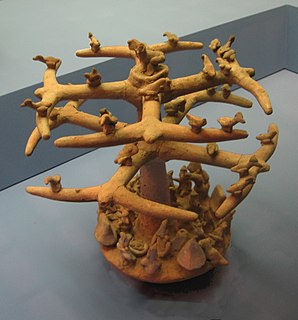 W
WWorld trees are a prevalent motif occurring in the mythical cosmologies, creation accounts, and iconographies of the pre-Columbian cultures of Mesoamerica. In the Mesoamerican context, world trees embodied the four cardinal directions, which also serve to represent the fourfold nature of a central world tree, a symbolic axis mundi which connects the planes of the Underworld and the sky with that of the terrestrial realm.
 W
WThe Myth of Er is a legend that concludes Plato's Republic (10.614–10.621). The story includes an account of the cosmos and the afterlife that greatly influenced religious, philosophical, and scientific thought for many centuries.
 W
WNorse cosmology is the study of the cosmos (cosmology) as perceived by the North Germanic peoples. The topic encompasses concepts from Norse mythology, such as notions of time and space, cosmogony, personifications, anthropogeny, and eschatology. Like other aspects of Norse mythology, these concepts are primarily recorded in the Poetic Edda, a collection of poems compiled in the 13th century, and the Prose Edda, authored by Icelander Snorri Sturluson in the 13th century, who drew from earlier traditional sources. Together these sources depict an image of Nine Worlds around a cosmic tree, Yggdrasil.
 W
WOld Babylonian oracle is a Sumerian myth, written on clay tablets dated to between 2340 and 2200 BC.
 W
WPsalm 104 is the 104th psalm of the Book of Psalms, beginning in English in the King James Version: "Bless the LORD, O my soul. O LORD my God, thou art very great". In the slightly different numbering system in the Greek Septuagint and the Latin Vulgate version of the Bible, this psalm is Psalm 103. In Latin, is known as "Benedic anima mea Domino".
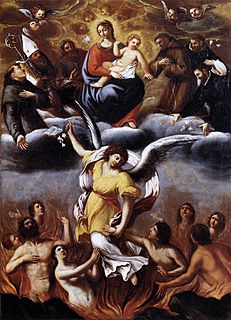 W
WPurgatory is, according to the belief of some Christians, an intermediate state after physical death for expiatory purification. The process of Purgatory is the final purification of the elect, which is entirely different from the punishment of the damned. Tradition, by reference to certain texts of scripture, sees the process as involving a cleansing fire. Some forms of Western Christianity, particularly within Protestantism, deny its existence. Other strands of Western Christianity see purgatory as a place, perhaps filled with fire. Some concepts of Gehenna in Judaism resemble those of purgatory.
 W
WRaikva, the poor unknown cart-driver, appears in Chapter IV of the Chandogya Upanishad of Muktika canon where it is learnt that he knew That which was knowable and needed to be known, he knew That from which all this had originated. Along with Uddalaka, Prachinshala, Budila, Sarkarakshaya and Indradyumna, who respectively held earth, heaven, water, space and air to be the substrata of all things, and many others, Raikva was one of the leading Cosmological and Psychological philosophers of the Upanishads. He imparted the Samvarga Vidya to King Janasruti. Like Indradyumna he too held air to be substratum of all things.
 W
WSince the emergence of the Big Bang theory as the dominant physical cosmological paradigm, there have been a variety of reactions by religious groups regarding its implications for religious cosmologies. Some accept the scientific evidence at face value, some seek to harmonize the Big Bang with their religious tenets, and some reject or ignore the evidence for the Big Bang theory.
 W
WSelf-praise of Shulgi is a Sumerian myth, written on clay tablets dated to between 2100 and 2000 BC.
 W
WSheol, in the Hebrew Bible, is a place of darkness to which the dead go. When the Hebrew scriptures were translated into Greek in ancient Alexandria around 200 BC, the word Hades was substituted for Sheol.
 W
WThe Dream of Scipio, written by Cicero, is the sixth book of De re publica, and describes a fictional dream vision of the Roman general Scipio Aemilianus, set two years before he oversaw the destruction of Carthage in 146 BC.
 W
WThe Song of the hoe or the Creation of the pickax is a Sumerian creation myth, written on clay tablets from the last century of the 3rd millennium BCE.
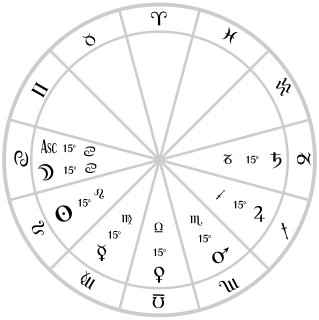 W
WThe Thema Mundi was a mythical horoscope used in Hellenistic astrology that shows the supposed positions of the seven visible planets at the beginning of the universe. It purports to exemplify the logic behind the sign rulerships, exaltations, and meanings of the aspects, among other things. The purely symbolic nature of the chart is readily perceived from the impossible positions of Venus and Mercury in it. In the late Middle Ages there has been a confusion between a horoscope of the world and the thema mundi.
 W
WIn the Book of Genesis, the tree of life is first described in chapter 2, verse 9 as being "in the midst of the Garden of Eden" with the tree of the knowledge of good and evil. After the fall of man, "lest he put forth his hand, and take also of the tree of life, and eat, and live for ever", cherubim and a flaming sword are placed at the east end of the Garden to guard the way to the tree of life. The tree of life has become the subject of some debate as to whether or not the tree of the knowledge of good and evil is the same tree.
 W
W"Turtles all the way down" is an expression of the problem of infinite regress. The saying alludes to the mythological idea of a World Turtle that supports a flat Earth on its back. It suggests that this turtle rests on the back of an even larger turtle, which itself is part of a column of increasingly large turtles that continues indefinitely.
 W
WThe Urantia Book is a spiritual, philosophical, and religious book that originated in Chicago sometime between 1924 and 1955. The authorship remains a matter of speculation. It has received various degrees of interest ranging from praise to criticism for its religious and science content, its unusual length, and its lack of a known author.
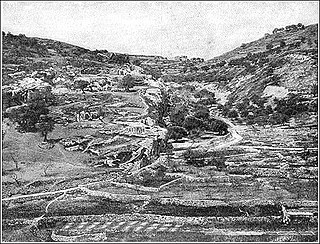 W
WThe Valley of Hinnom is an important topographical feature surrounding historical Jerusalem from the west and southwest. Its name in biblical Hebrew is "valley of the son of Hinnom" or "valley of the children (sons) of Hinnom". Its Arabic name is Wadi er-Rababi.
 W
WThe world tree is a motif present in several religions and mythologies, particularly Indo-European religions, Siberian religions, and Native American religions. The world tree is represented as a colossal tree which supports the heavens, thereby connecting the heavens, the terrestrial world, and, through its roots, the underworld. It may also be strongly connected to the motif of the tree of life, but it is the source of wisdom of the ages.